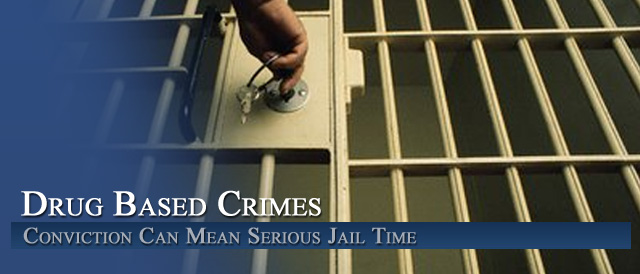




Colorado Juvenile Diversion – Juvenile Delinquency Programs – How They Work – What They Mean
By Colorado Criminal Defense Lawyer for Juvenile Criminal Defense – H. Michael Steinberg
The importance of Colorado Juvenile Diversion Programs cannot be understated. This article describes them and then discusses the issues surrounding why a juvenile in the Colorado Juvenile Justice System may want to accept a juvenile diversion “offer.” Many of my clients are confused about diversion – this comprehensive article explains the history and nature of diversion programs for Colorado juveniles who find themselves in trouble.
Introduction To The Concept Of Colorado Juvenile Diversion
At one time or another, almost all adolescents engage in risky behaviors, act without thinking, and make bad decisions more often than they will as adults; thus, many may engage in what would be judged as illegal behavior.
For the majority of youth who are arrested, their first delinquency is not a sign of a future delinquency problem.
Given these facts, a strong argument can be made for having a way to avoid formal processing of youth through the juvenile justice system under certain conditions. Without such a mechanism, large numbers of youth are unnecessarily charged and processed through the system, thus increasing a youth’|s probability of further delinquencies due to their exposure to other delinquent youth during this process.
Moreover, by formally processing these youth, resources available to the juvenile justice system are used in ways that weaken the system’s capacity to process and respond to the minority of youth who actually present a risk to public safety and need juvenile justice adjudication and rehabilitation.
Programs that divert youth from involvement in the juvenile justice system have become more frequent in response to the growing recognition that such involvement often is not necessary to achieve society’s goals.
The Beginning Of Juvenile Diversion Programs – A Brief History
The history of diverting arrested youth from formal processing began with the birth of the juvenile court itself. Juvenile justice, as conceived in the late 19th century, provided for a rehabilitation-based response to youth’s illegal behaviors. The juvenile court set aside the punitive sanctions youth had been receiving in criminal court. As such, juvenile justice in its infancy could be construed as a diversion program.
It diverted youth from criminal processing as this was believed to be in the best interests of youth and society. Juvenile courts were to order dispositions that were more attuned to the potential to change young lives through special rehabilitation programs, clinical services, and educational guidance.
U.S. Supreme Court decisions of the 1960’s announced the juvenile court’|s failure to live up to its initial promise. In effect, the juvenile justice system was diverting youth from punitive criminal justice sentencing to punitive juvenile justice dispositions, thus representing no diversion at all. Criminologists of the time were challenging the effectiveness of juvenile sanctions and programming. Advocates and civil libertarians were documenting the lack of constitutional protections afforded youth, and many were claiming that juvenile justice processing was not protecting youth from legal penalties, but actually bringing more and more youth under state control process they called net widening.
Others pointed out inefficiencies in the system and the high costs of incarcerating children, which became a point of concern and focus for reform. In this way, diversion from juvenile justice itself became a topic of enormous interest during the 1970s and 1980s. Might youth and society be better served by avoiding formal juvenile court processing for alleged offenses, whenever feasible and safe?
Recommendations of the 1967 President’s Commission on Law Enforcement and Administration of Justice marked the beginning of a wave of diversion reform. The Commission urged that alternative ways needed to be found for treating troubled youth outside of the traditional juvenile justice system. They envisioned juvenile court jurisdiction being restricted to those cases of manifest danger, with most youths being diverted into various forms of community-based services.
Research Evidence on Diversion
In the early years of diversion, the main goal was to protect youth from harsh sanctions in juvenile courts and the negative effects of holding cells. Many diversion programs still list this as a primary reason for developing a diversion program. A review of the diversion literature over the past 40 years finds at least five emergent themes identified by communities explaining why they developed methods to divert youth from formal juvenile court processing.
These themes include:
1) reducing recidivism;
2) providing services;
3) avoiding labeling effects;
4) reducing system costs;
and
5) reducing unnecessary social control
Reduction of recidivism by youth is one of the most frequently mentioned objectives and the most widely used criterion for diversion program effectiveness.
Recidivism refers to re-offending by a youth or repeated delinquent behavior subsequent to the original offense. By reducing formal processing, diversion programs attempt to reduce delinquency and recidivism, and in turn, increase public safety.
The second general theme providing services to youth, is not unrelated to the first. Several studies have indicated that treating youth in the community using non-justice personnel can reduce further involvement with the juvenile justice system and have positive results for the youth.
Services Provided to Juveniles By Non – Law Enforcement Personnel
Although not all youth need services, the types and quality of services and treatment provided through a diversion program may also be an indicator of program effectiveness. In an important document on diversion, the research suggests that the success of diversion programs requires providing intensive and comprehensive services that include the youths’ families and take into account community, school, and peer interactions, as well as use experienced caseworkers.
The third general theme reducing labeling effects, has been at the heart of diversion rationale for several decades. Labeling theory suggests that when a youth becomes identified with criminal activity, there is a negative label attached to the individual both by the individual and by society that results in stigma and negative self-perceptions.
Labeling of Juveniles Is Stopped
From this labeling perspective, a deviant career does not come to fruition directly from the initial act of delinquency, but rather from the imposition of a deviant label by society and the reaction of the youth to this labeling.
An early researcher of labeling, claimed that it was best to leave the kids alone whenever possible, because labeling resulted in a self-fulfilling prophecy that created a higher potential for future crime. Diverting youth from juvenile justice processing could reduce labeling effects and avoid stigma by minimizing exposure to the “delinquent¨ label.
A final theme emerging from the diversion literature is the reduction of unnecessary social control. This theme arises from a legal perspective focusing on civil liberties. Proponents have argued that the judicial system should not impose greater restrictions on individuals than are necessary to protect public safety.
When youth engaging in low-severity offenses (e.g., status offenses) are formally processed through the juvenile justice system and taken out of the community, the judicial system sometimes exerts a degree of control that is disproportionate to the actual threat to public safety or the needs of the youth.
Diversion programs could reduce social control by serving youth in the least restrictive environments that will satisfy their needs and the community’s safety.
Some Colorado counties have more than one process through which juveniles may be diverted from court, and accordingly have more than one procedure diverting juveniles. Regardless of how the county labels the process, however, the intended outcome of these procedures is the same: to provide youth with a less formal alternative to court processing than adjudication.
The Different Names For Juvenile Diversion
Some states label the alternative to court processing “diversion,¨ while other states use terms such as informal processing, adjustment, supervision, or proceeding to refer to the very same thing. Some states have more unique labels for the diversion process, such as probation adjustment, deferred prosecution, deferral of delinquency proceeding, civil citation, consent decree, or formal accountability agreement.
Diversion programs define various procedures or rules that will be applied to diversion practices in the county. Some of the most commonly mentioned provisions include: criteria for eligibility, the purpose of the program, and the voluntary nature of participation.
All Colorado counties offering diversion offer alternatives to formal court processing provide a set of criteria to guide the corresponding decision-maker in deciding which youth are eligible to be diverted.
A set of factors is used in making the eligibility determination.
These include:
(1) the nature of the alleged offense;
(2) the minor’s age;
(3) the minor’s character and conduct;
(4) the minor’s behavior in school, family, and group settings;
and
(5) any prior diversion decision made concerning the minor and the nature of the minor’s compliance with the diversion agreement.
Diversion cannot be employed unless youth voluntarily participate by providing knowing and intelligent consent. The youth and parent must be clearly advised of their right to consent to or refuse diversion. This is considered important, since entry a diversion program requires, in effect, that the youth waive constitutionally protected rights.
The Juvenile MUST ADMIT RESPONSIBILITY – And Waive Constitutional Rights…
youth are not eligible for diversion unless they admit their participation in the offense that was charged, which then leads to informal rather than formal processing. By doing this – they are waiving their right to be tried, to plead not guilty, to contest the charges, and to present evidence in their defense, all of which could potentially lead to dismissal of the charges and avoidance of any penalties.
Colorado Juvenile Diversion Programs – C.R.S. 19-2-303
Colorado Law – C.R.S. 19-2-303 and 19-2-704 authorize and fund Colorado juvenile diversion programs. Here is the law:
§ 19-2-303. Juvenile diversion program – authorized
(1) In order to more fully implement the stated objectives of this title, the general assembly declares its intent to establish a juvenile diversion program that, when possible, integrates restorative justice practices to provide community-based alternatives to the formal court system that will reduce juvenile crime and recidivism, change juvenile offenders’ behavior and attitudes, promote juvenile offenders’ accountability, recognize and support the rights of victims, heal the harm to relationships and the community caused by juvenile crime, and reduce the costs within the juvenile justice system.
Policy Goals:
(1) Program should integrate restorative justice practices to provide community-based alternatives to formal court systems to reduce juvenile crime and recidivism, promote accountability, support the rights of victims, heal the harm to relationships and the community caused by juvenile crime, and reduce costs in the juvenile justice system
Program may serve as an alternative to filing a petition, an adjudicatory hearing, or dispositions finding a juvenile delinquent.
The district attorney may agree to allow a juvenile to participate in a diversion program.
(2) .. to effectuate the program, the division may contract with governmental units and non governmental agencies to provide services for eligible youth through community-based projects providing an alternative to a petition, an adjudicatory hearing, or dispositions of a juvenile delinquent
“Services¨ may include, but is not limited to, provision of diagnostic needs assessment, general counseling and counseling during a crisis situation, specialized tutoring, job training and placement, restitution programs, community service, constructive recreational activities, day reporting and day treatment programs, and follow-up activities. (C.R.S. 19-2-103) (8)
The director may implement a mental illness screening program to screen juveniles who participate in the juvenile diversion program.
Additional Information
C.R.S.19-2-704 provides: As an alternative to a petition filed pursuant to section 19-2-512, an adjudicatory trial pursuant to part 8 of this article, or disposition of a juvenile delinquent pursuant to section 19-2-907, the district attorney may agree to allow a juvenile to participate in a diversion program established in accordance with section 19-2-303.
The Two Routes To Juvenile Diversion Pre-file / Pre-trial Diversion
A program within a district attorney’s office, or formally designated by a district attorney, to ensure the successful legal diversion of juveniles from formal court action through pre-file diversion. Juvenile cases presented for filing by law enforcement are determined to have legal sufficiency for prosecution through intake assessment, but based on local criteria are referred for diversion consideration.
Generally, the case is the first for the juvenile presented for filing in district court, even though there may be a history of municipal and/or county court involvement. The juvenile must accept responsibility for the delinquent act and submit an admission of guilt. If the juvenile successfully completes the diversion contract, the charges are dropped and no further legal action is taken. If the juvenile fails to comply with the diversion contract, the district attorney will re-initiate formal court proceedings.
Post-file / Judicial Diversion
According to local practice and criteria, charges against the juvenile are filed by the district attorney’s office. However, based either on the prosecutor’s request or action by the court, the juvenile is offered an informal adjustment or deferred adjudication, after admission of guilt and agreement to comply with court conditions. Although the juvenile may technically be on probation, a formal agreement from the court delegates supervision and other diversion services to either the district attorney’s juvenile diversion program or a community-based agency.
Sample Colorado Juvenile Program 1 The Denver County DA’s Juvenile Diversion Program
The Denver District Attorney’s Juvenile Diversion Program works with eligible first-time juvenile offenders as an alternative to formal court proceedings. These young people are referred to as clients, and participate in Diversion with their parent or guardian. Diversion programs focus on teaching skills and providing opportunities to practice those skills. Clients are assigned to programs based on their need and must perform community service and complete restitution.
Programs include:
Cognitive-Behavioral Programming
These are group settings in which clients learn such things as life skills, problem solving, conflict resolution, critical thinking and reasoning skills. Groups are based on gender, age and language.
Community Service
Clients perform community service through projects such as graffiti removal, trash pick-up, helping at food banks, homeless shelters and community events by request.
Specialized Client Services
This includes Educational Enhancement and Substance Abuse Screening and Treatment. Clients in the Educational Enhancement program receive visits at school by staff members, and get regular feedback about attendance, behavior and performance. They may also be involved in a tutoring program that provides homework help and topic-specific instruction. A full service computer lab including Microsoft Word and the internet is available, along with English as a second language. Substance Abuse Screening is conducted on all clients. Referrals are made to the TASC program for those clients with substance abuse issues.
Family Intervention
Clients may take part in family therapy, which includes family sessions as well as individual counseling sessions.
Restitution Programs
Restitution is an important piece of the Juvenile Diversion Program. Some clients participate in a program called Acquiring Restitution Through Talent (A.R.T.T.). These clients work with various art forms and crafts then sell their items to earn the money to pay back victims.
Restorative Justice Program
In a number of cases, the victims of crime or community members affected by crime can meet face to face with the person who committed the crime. Restorative justice involves trained staff and/or community members who help ensure both the victim and offender receive answers to their questions as they work toward restoration and closure.
A Closer Look at Colorado Juvenile Diversion Programs
Denver, Jefferson, Adams, Arapahoe, Douglas, Larimer and Weld County all provide an alternative to the regular court process for juveniles caught up in the web of the juvenile justice system.
Programs most often involve cognitive-behavioral programming involving therapy in group sessions that are divided according to age, language, and sex. The programs focus on problem solving and conflict resolution, as well as other life skills like critical thinking and reasoning.
Most often each of the Colorado counties District Attorney’s oversees the offer and acceptance of teens and minors into their specific Juvenile Diversion Program. Underage individuals who have committed Class 3, 4, 5, or 6 Felonies and Class 1, 2, or 3 Misdemeanors will generally be accepted or referred to the Juvenile Diversion Program. However, more serious crimes and cases like sexual assault are not eligible for the Juvenile Diversion Program.
Sample Juvenile Diversion Program 2
The Adams County Diversion Program
The Adams County District Attorney’s Diversion Program is a counseling alternative to formal District Court filing for the offender charged with a non-violent offense. The goal of the Diversion Program is to reduce the incidence of recidivism. Our philosophy is that early intervention and expedient consequences not only meet the community’s need to know that something of consequence has happened, but minimizes recidivism as well.
The expectations within Diversion are often more extensive than the client may receive via formal court filing. Diversion case loads are smaller in numbers than probation caseloads, and many times we can more effectively hold the individual accountable for his/her actions.
Services offered by Diversion include, but are not limited to; individual, couple’s, family and group counseling, employment/educational counseling and assistance, chemical abuse counseling, restitution collection, victim-offender mediation, community service, diagnostic testing referrals, and referrals to outside agencies when appropriate. These services are included in the clients Diversion contract as indicated by the assessment /intake interview and collateral information gathered by the counselor.
The client remains in the program based upon their progress and compliance. When a client does not comply with the terms of his/her contract, the case is returned to the District Attorney’s Office for filing. Any commission of a subsequent offense by the client may result in dismissal from the Program and filing of both the original referring offense and the subsequent offense.
To be successfully terminated from Diversion a client must comply with and complete all items contained in their contract. Upon successful completion of the Program, the District Attorney’s Office will dismiss the original charge
The Procedure
Minor or first time offenders, excluding most felonies. A meeting is scheduled with parent(s) or Guardian(s) and juvenile offender with in two weeks of receiving report from law enforcement. The meeting is conducted by our juvenile diversion officer. A Diversion contract is signed during initial meeting in most cases. There is a wide range of sentencing (excluding detention) 0-12 months probation, 0-150 hours community service work (work crews), and restitution.
Juveniles are held accountable during community supervision through weekly contact with staff. School, family, work site contact, curfew, drug testing, counseling, and classes are all requirements while on diversion. Violations or noncompliance result in filing the case through the prosecutor’s office for formal court proceedings before a juvenile court judge. For questions please contact Diversion Coordinator/Probation Officer Jessie Dominguez [email protected]
Essential Components: Per Colorado Statute, the goal of diversion is to prevent further involvement of juveniles in the formal justice system (19-1-103(44) C.R.S.). Juvenile diversion programs should be community-based alternatives to the formal court system for youth between the ages of 10-17 who have been taken into custody for misdemeanor or felony offenses. Diversion programs should concentrate on holding the youth accountable for their behavior while involving them in programs and activities to prevent future criminal and delinquent behavior.
Juvenile Diversion programs must have clear standards regarding the type of cases that are accepted and what determines successful completion of the process. All applicants must describe the sequence of activities or services for participants from referral through discharge, including program philosophy, acceptance criteria for referrals, treatment or supervision approaches, and specific services to be provided. This must also include the process for filing of charges and referral back to the court if the youth fails to complete the program successfully.
Please Call:
H. Michael Steinberg has been a Colorado criminal law specialist attorney for 40 years. For the First 13 years of his career, he was an Arapahoe – Douglas County District Attorney Senior prosecutor. In 1999 he formed his own law firm for the defense of Colorado criminal cases.
In addition to handling tens of thousands of cases in the trial courts of Colorado, he has written hundreds of articles regarding the practice of Colorado criminal law and frequently provides legal analysis on radio and television, appearing on the Fox News Channel, CNN and Various National and Local Newspapers and Radio Stations. Please call him at your convenience at 720-220-2277
If you have questions about ..
Colorado Juvenile Diversion Programs
…..in the Denver metropolitan area and throughout Colorado, attorney H. Michael Steinberg will be pleased to answer those questions and to provides quality legal representation to those charged in Colorado adult and juvenile criminal matters.
Other Articles of Interest:
- Colorado Criminal Juvenile Law – What Happens If My Child Is Not Given and Waives His/Her Miranda Warnings During An Interrogation?
- FAQ – Colorado Criminal Law – Sealing – Expunging Criminal Histories – Sealing Criminal Arrests – and Certain Drug Related Criminal Convictions
- Colorado Criminal Law – Understanding Sentencing Alternatives for First Offenders
- Colorado DUI – DWAI – Drug and Alcohol Treatment Standards
- War Against Drugs – Explored and Discredited In Excellent Article













